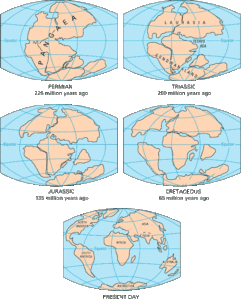By Tony Royden
A piece of Canada that broke off about 1.7 billion years ago has been found in Australia, according to geologists.
Geologists analyzed chemical signatures of very ancient sedimentary rocks in Georgetown, Queensland, that indicate the location and timing of the rocks formation.
At that time, the continents were drifting together to form a supercontinent called Nuna or Columbia. The data according to their findings suggests that the Georgetown rocks broke off from Canada and collided with northern Australia around 1.6 billion years ago. It remained there even after Nuna broke apart 300 million years later.
The researchers found a geological signature that “cannot be linked with any other rocks in Australia,” according to Adam Nordsvan
Experts who have analysed the signature have concluded that it is strikingly similar to other sedimentary rocks deposited at a similar time in North America, in particular, the Wernecke Supergroup of the Yukon region and the Athabasca Basin.”
Throughout Earth’s history, the continents drifted together and apart numerous times. They most recently formed the supercontinent Pangea 300 million years ago before breaking up to form today’s continents.
That makes it difficult to figure out how previous supercontinents were configured, or even exactly when they formed.
Nordsvan, a doctoral researcher at Curtin University in southwestern Australia, said there was some debate about whether northeastern Australia was connected to North America or to Siberia when Nuna formed.
“Our data rules out the Siberia option,” he told CBC News
The new study, published earlier in January in the journal Geology, also supports other evidence that Nuna formed about 1.6 billion years ago.
The study was funded by the Australian Research Council and Curtin University in Western Australia.
CREDIBLE
David Schneider, a professor of earth and environmental sciences at the University of Ottawa who was not involved in the research has praised the credibility of the study. He told a handful of reporters that the finding supports the theory that Canada was once attached to Australia
“This is pretty good evidence that that part of Australia was probably attached to Canada at some point,” said Schnieder, who investigates the timing and rates of different processes and events involving the Earth’s tectonic plates.
Schneider noted that gold deposits near Georgetown could be worth exploring for gold in the Yukon where it could have been attached.
Nordsvan and his researching team used to figure out the origin of the Georgetown used grains of a mineral called zircon. Zircon contains radioactive uranium, which decays to lead over time. The ratio of lead to uranium is higher in older rocks and contains a higher ratio of lead to uranium than younger rocks.
The zircon itself forms from magma, either from volcanoes or from underground, so its age provides a record of events involving magma in the local area near where the zircon is deposited — a signature of sorts.
Expert geologists are working on digging deeper for even more evidence to link the Georgetown rocks to Canada with more certainty.




